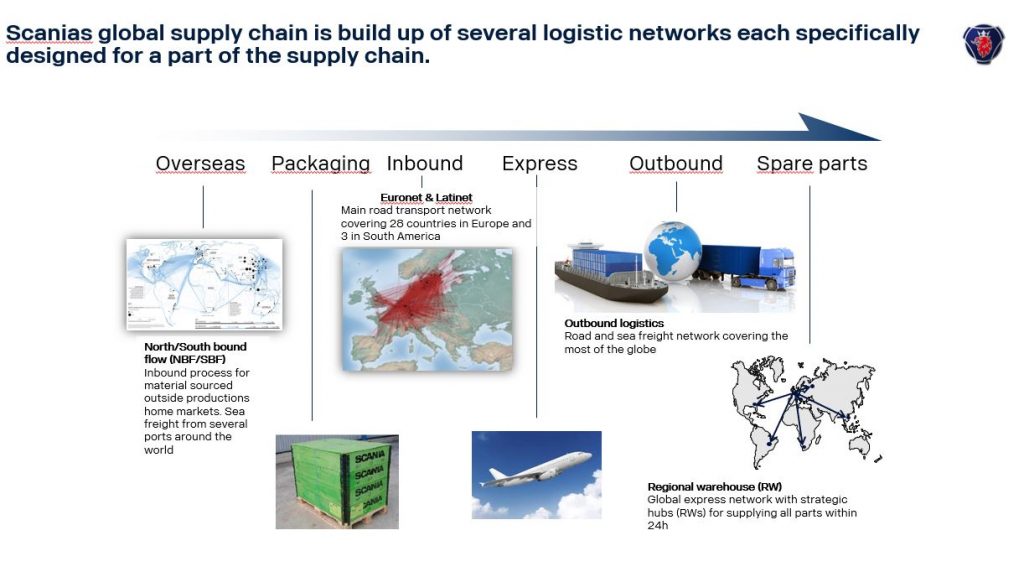Logistics Introduction
Scanias Logistics Network and Supply Chain are made up of several structures of different complexity. Below is a sample of pictures with description, which we hope will serve as an introduction towards Scania´s way of working with Logistics.
Scania´s global supply chain is a complex composite of several logistics networks, tied together. Each and one of them specifically designed for a specific part of the supply chain.

All of Scania´s logistics flows are controlled via our Regional Material Control (RMC) units located in different areas of the world. The pictures below demonstrates the processes of the RMC and their respective control areas.


The Transport Control is also a function of the RMC units, responsible for the orders of the transports and the monitoring of them as well. In the following pictures the booking process and different types of deadlines for our inbound transports can be seen along with the design of the entire flow, from origin to destination:


Euronet, which is the the area for flow of transports within Europe, and Scania has it´s own way of implementing the 4R´s which are
- Right Routing
- Right Carrier
- Right Equipment
- Right Modality

As a Scania supplier and carrier it is good to have the knowledge about how our transport network is set-up and the various ways of routing. At Scania we are talking about five different ways of routing: TL, Pre-collection, Milkrun, LTL and FTL.

